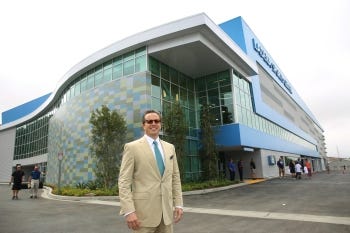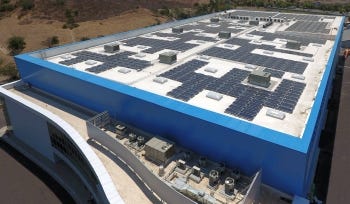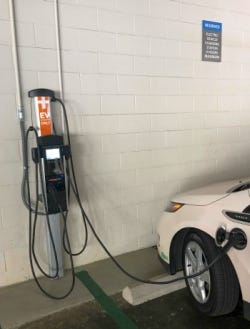Why Building Green Is Good Self-Storage Business
If a self-storage company is committed to developing its holdings in a way that benefits the corporation, community and environment, green building must be an inherent practice. Here some examples of eco-friendly facilities, including benefits and costs.
January 16, 2017

By Brian Griewe
If a self-storage company is committed to developing its holdings in a way that benefits the corporation, community and environment, green building must be an inherent practice. How we construct and maintain our properties makes a huge difference in the health of our planet and its inhabitants as well as our own bottom line. Green buildings use little energy, have lower maintenance costs and provide a healthier, more stimulating environment for customers and employees.
But what exactly does it mean to build “green”? The term has been bandied about for decades, and you’ll find it being used in relation to buildings, communities and products, such as vinyl windows and recycled-content flooring. It’s not always easy to sort through those claims, which is why certification programs such as the U.S. Green Building Council’s (USGBC) Leadership in Energy and Environmental Design (LEED) and the Green Globes rating and certification tool are extremely helpful—even necessary.
LEED awards points for energy-efficient lighting and HVAC systems, indoor air quality, water conservation, and sustainable materials in a weighted system that adds up to Silver, Gold and Platinum ratings. Green Globes is a bit less rigorous and costly, allowing business owners to select from a list of sustainability features to rack up points toward certification. Working with a LEED-accredited architect who knows how to offset expenses and earn credits without spending extra money makes it easier to get certified.
Why should a self-storage developer or owner bother with certification? More than half the respondents in a recent Nielsen global survey said they were willing to pay more for products and services from companies committed to making positive social and environmental impact. In that same survey, 61 percent of corporate leaders saw sustainability as a key market differentiation that improved financial performance. The USGBC claims green buildings attract tenants more easily and command higher rents and sale prices. In some markets, it states traditionally constructed buildings are experiencing a “brown discount,” renting and selling for less than market value.
According to USGBC, researchers have proven that building to LEED certification standards saves companies in energy and other resource costs over the long run, and provides a more hospitable environment for employees and customers. LEED-certified buildings use 25 percent less energy and see a 19 percent reduction in aggregate operational costs compared with non-certified buildings. As such, building owners report a 19.2 percent increase in return on investment for existing projects and a 9.9 percent increase for new projects. When you throw in the numerous tax incentives, tax credits, grants and expedited building permits you get when you build green, the bottom-line impact becomes pretty substantial.
Storage Goes Green
Many self-storage companies are getting on board with the green movement. Here are but a few examples:
Focus Property Group LLC built a solar-powered, Silver-certified Greenbox Self Storage building in downtown Denver using energy-efficient and recycled products and materials.
Northgate Self Storage constructed a 675-unit Gold-certified facility in Colorado Springs, Colo., that ventilates and filters air for optimal indoor air quality. This is in addition to energy-efficient features such as insulated-foam panels and low volatile organic compounds (VOC) materials.
In Maryland, ezStorage has LEED-certified facilities in Charles Village and Elkridge. The Gold-certified Elkridge facility achieves a 58 percent energy savings over non-certified buildings. The company has pledged that all future facilities will be certified.
Also in Maryland, Extra Space Storage Inc. has built 12 Gold-certified facilities, with more pending. The company continues to improve its properties with energy-efficient lighting and solar panels.
H. Michael Schwartz, CEO of SmartStop Asset Management Inc., designed, financed and owns a 120,000-square-foot mixed-use facility in Ladera Ranch, Calif., that was built to LEED Gold standards. The property is home to SmartStop’s headquarters and a 42,000-square-foot storage facility. The photovoltaic system powering the facility is expected to generate 472,200 kilowatt hours of energy annually.
 Solar is an untapped opportunity about to explode. In Canada, where the solar market is in its infancy, SmartStop has built three high-revenue, high-efficiency storage facilities powered by 750,000-kilowatt solar systems. SmartStop included conduits for future photovoltaic systems on every building because it’s much easier and less expensive than trying to retrofit.
Solar is an untapped opportunity about to explode. In Canada, where the solar market is in its infancy, SmartStop has built three high-revenue, high-efficiency storage facilities powered by 750,000-kilowatt solar systems. SmartStop included conduits for future photovoltaic systems on every building because it’s much easier and less expensive than trying to retrofit.
Electricity from coal, gas and hydro (water) isn’t getting cheaper. Local governments are making energy efficiency a standard requirement for building licenses and permits. And builders are realizing that something as simple as keeping ceiling heights low—so they don’t have to heat and cool vast amounts of empty space—can yield big savings in the long run.
That’s the great news about so many “green” building practices: They save money. In the self-storage industry, where curb appeal matters, companies pay a lot to keep thirsty landscaped grounds alive. Installing rain gauges and xeriscaping—landscaping that eliminates the need for supplemental irrigation—are two easy ways to turn down the spigot and diminish the money flow.
The cost of lighting also adds up. LEDs, light-control monitors and motion sensors are simple green fixes that save money. LEDs use a fraction of the energy of other lighting sources and illuminate so well they can be spaced farther apart. Fewer fixtures mean reduced material and maintenance costs.
Durable materials such as hard-surface flooring also save money over time. They last longer, require less maintenance and provide a healthier environment for customers and employees. Soft-surface materials like carpeting can trap and hold dirt, dust and contaminants, and often contain questionable chemicals like formaldehyde, a government-recognized carcinogen. Reducing people’s exposure to products and materials that emit VOCs—chemicals that evaporate at room temperature and can cause headaches, allergic reactions, fatigue and dizziness—means better productivity and fewer sick days.
Weighing the Costs
You might sometimes pay more to take advantage of energy- and water-saving technology and the safest, healthiest materials; but it’s worth it. Green materials and systems save money over the life of a building. For example, thermal-plastic roofing helps with heat reduction, requires less long-term maintenance than asphalt over a 20-year cycle, and is fully recyclable at the end of its life.
 The USGBC states the premium to certify most LEED-certified buildings ranges from 0 percent to 4 percent. Supply-chain maturity and exponential leaps in technology have brought the cost of green building down. We’re in a time when a little upfront cost goes a long way. A 2 percent investment to add green features yields savings of more than 10 times the original outlay in operational costs as well as increased employee productivity and health.
The USGBC states the premium to certify most LEED-certified buildings ranges from 0 percent to 4 percent. Supply-chain maturity and exponential leaps in technology have brought the cost of green building down. We’re in a time when a little upfront cost goes a long way. A 2 percent investment to add green features yields savings of more than 10 times the original outlay in operational costs as well as increased employee productivity and health.
Availability and Acceptance
 Throughout North America, attitudes about green building are changing. When LEED standards were established in 2000, it was a fairly radical idea. Eco-friendly products, materials and contractors were substantially more expensive and often hard to find. A lot of builders saw green building as a fad and didn’t take it seriously.
Throughout North America, attitudes about green building are changing. When LEED standards were established in 2000, it was a fairly radical idea. Eco-friendly products, materials and contractors were substantially more expensive and often hard to find. A lot of builders saw green building as a fad and didn’t take it seriously.
Now everyone from consumers to corporate board members is beginning to understand that the way in which we build affects people and the planet. As more developers jump on board, the cost of nontoxic, environmentally friendly products and materials is dropping while availability increases. Information and resources are easier than ever to find. State and municipal green-building programs are popping up everywhere from California—where Title 24 energy standards are constantly being tweaked for better energy performance—to Toronto in which the Green Building Standard pushes the envelope in sustainable site and building design.
Some day—likely soon—every building will have smart, energy-efficient designs and durable, nontoxic materials. Regulations will require them, and informed people will demand them. Until that day, taking a simple step like installing LED lighting or going big with a photovoltaic system will keep you ahead of the competition and improve your company’s bottom line.
Green building is no longer a fad; it’s good business.
Brian Griewe is vice president of development at SmartStop Asset Management LLC, a diversified real estate company with a managed portfolio that comprises 6.7 million rentable square feet and 59,400 storage units. The company is the property/asset manager for 89 storage facilities throughout the United States and Toronto. Mr. Griewe is responsible for expanding the company’s acquisitions and commitment to creating environmentally friendly, energy-efficient buildings. For more information, visit www.smartstopassetmanagement.com.
You May Also Like





